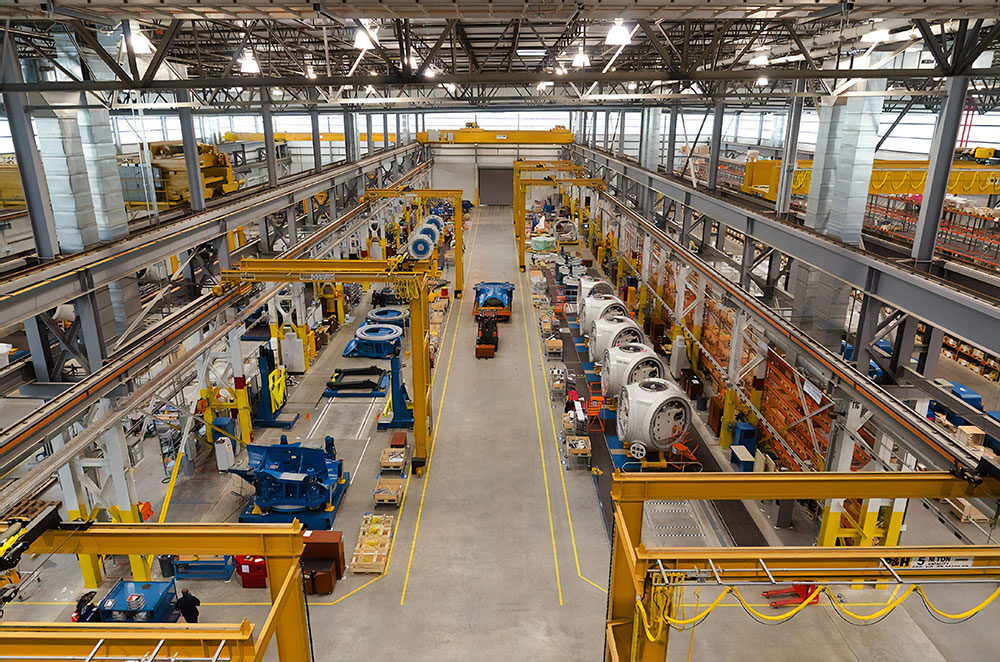Autonomous mobile robots can slot into existing manufacturing workflows and help automate factory logistics and streamline plant processes.

For plants that struggle with site logistics, mobile robots can help streamline the flow of goods and raw materials around the site.
New developments from the tech and robotics industries — like collaborative robotics, internet of things (IoT) devices and AI-powered machine vision algorithms — have made autonomous mobile robots more practical than ever.
These mobile robots move around a facility’s floor, typically independently and without cages, to perform specific tasks.
In recent years, they’ve become an invaluable tool for industrial facilities — like warehouses, processing plants and manufacturing plants — wanting to automate work without significantly disrupting existing processes.
This is why these mobile robots are worth the investment — and how almost any manufacturing plant can stand to benefit from adopting them.
The most significant benefit of a mobile robot — especially when compared to more conventional factory robotics — is the technology’s flexibility. In many cases, mobile robots can slot into existing manufacturing workflows without major changes or significant rearrangement of the factory floor.
For the same reason, these robots can also be a significant asset if a manufacturer needs to switch facilities. Mobile robots aren’t bolted in and are often easy to reprogram for a new working space. As a result, they may not be nearly as expensive to move as conventional factory robotics, which would need to be carefully removed and reinstalled before they could be used at a new location.
New AI tech also makes these robots much better at working without human intervention or guidance. While training will be necessary, these robots can often be adopted without disrupting existing workflows.
Many mobile robots are also collaborative by default. They come with safety systems that help them avoid workers, slow down in high-traffic areas and prevent collisions with obstacles on the factory floor. This tech helps to minimize the safety risk that large, heavy robotics can pose.
These robots can also make workers safer by handling tasks that fall under one of the three D’s — dirty, dull or dangerous. Over time, the use of mobile robots can help reduce safety incidents and protect workers from threats like work that can lead to repetitive stress injuries (RSIs) or repeated exposure to toxic fumes.
These robots and robotics platforms can sometimes be integrated with other smart factory technology, like AI analytics tools and IoT sensors. In practice, this can help manufacturers optimize and streamline operations while also expanding their robots’ functionality.
Across the manufacturing sector, factory owners frequently use mobile robots to help streamline site logistics. This makes lean manufacturing principles more practical while also freeing up workers on the floor.
For example, a factory may want to fully embrace lean manufacturing principles. However, that plant may use a batch manufacturing workflow where people regularly deliver a bin of parts for a machine to work on. By contrast, mobile robotics can make more frequent trips or even enable continuous movement of raw materials and goods around the factory.
Mobile robots can be outfitted with equipment like robot arms, pallet forks or conveyor belts. They can slot easily into existing processes and handle most raw materials, regardless of storage method or shape.
When combined with IoT sensors or similar tech, factory managers can also gain a real-time, bird’s-eye view of how materials move through a site. Over time, this can help managers identify bottlenecks in factory workflows and optimize the movement of materials and goods across a site.
The same technology can also enable remote control of these robots — allowing supervisors to quickly shift them from one task to another as needed.
The range of potential applications for these robots is likely to expand in the future. Market estimates forecast that the industry will grow to be worth $54.1 billion in 2023, up from a value of just $18.7 billion in 2018.
As the market expands, developers are likely to experiment with new applications of existing tech. These robotics may be more useful for niche workflows or highly specific industrial applications.
While mobile robots are often much safer than conventional robots, they can pose significant safety risks that plant owners should be aware of. Managers or supervisors wanting to adopt mobile robots should take a few steps to ensure they integrate the technology without issue.
Before the robots are deployed at a worksite, supervisors and workers should be trained on how to work safely around these robots. An effective training program should include information about the potential dangers of these robots, the safety features they use and best practices to keep in mind while near them.
Robotics industry leaders also recommend that factory owners familiarize themselves with relevant safety standards and regulations before deciding on a particular solution. Following these standards will ensure you integrate the mobile robots in a way that doesn’t put workers at risk.
Simple changes to warehouse layout and signage can also help improve site safety. For example, some manufacturing plants and warehouses use tape, paint or decals to create separate lanes for mobile robots and workers.
New mobile robots can offer major benefits for manufacturers wanting to streamline plant operations. These robots, designed to work safely on the floor with minimal human intervention, can help plant managers simplify the movement of raw materials and goods around a plant.

Emily Newton
Emily Newton is the Editor-in-Chief of Revolutionized Magazine. She has over 3 years experience covering stories in the manufacturing, logistics and construction industries.
In this episode, I sat down with Beejan Giga, Director | Partner and Caleb Emerson, Senior Results Manager at Carpedia International. We discussed the insights behind their recent Industry Today article, “Thinking Three Moves Ahead” and together we explored how manufacturers can plan more strategically, align with their suppliers, and build the operational discipline needed to support intentional, sustainable growth. It was a conversation packed with practical perspectives on navigating a fast-changing industry landscape.